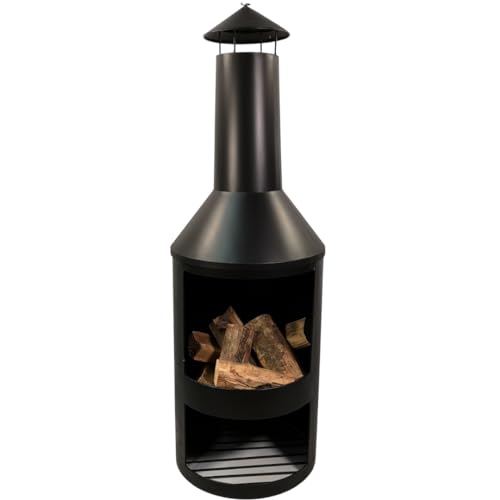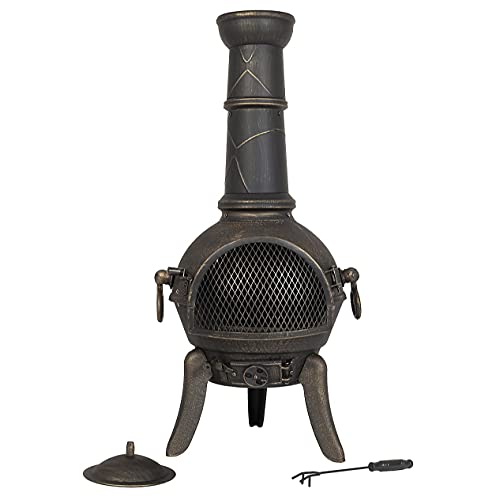가맹점회원 | Fire Pits & Chimineas Tools To Streamline Your Daily Life Fire Pits & …
아이디
패스워드
회사명
담당자번호
업태
종류
주소
전화번호
휴대폰
FAX
홈페이지 주소
 Chimineas Vs Fire Pits
Chimineas Vs Fire PitsSimilar to a stove with a pot-belly Chimineas have an opening in the front that is used for stacking fuel and a chimney that is attached to draw smoke up. They are available in a range of materials, such as clay or terracotta for the traditional appearance and iron or cast iron for durability.
Metal models are more robust and can withstand higher temperatures. Clay models require more attention. Both add warmth and ambience to outdoor spaces.
Chimineas
Chimineas resemble fireplaces in a number of ways, but they offer an attractive appearance and are specifically designed for outdoor use. They are usually made of clay or terra cotta, and may be brightly decorated with Mexican-inspired themes. Modern chimineas tend to be constructed from materials like cast iron and aluminium, which are more resistant to breaking and damage than clay.
The chiminea, which was originally an open fire was invented in Mexico and Western states. They are mostly used to entertain however they can be used as a focal point in any outdoor space. A chiminea's chimney's length can be used to direct smoke upwards which helps keep it from people who are seated around it, as opposed to fire pits, which usually contain an open flame that can cause sparks and embers to spread over the ground and surrounding areas.
Chimineas and fire pits both provide warmth to outdoor spaces, but they offer distinct advantages and requirements for maintenance. The aesthetics of the chiminea can be adapted to different styles of garden while the minimalist, sleek design of fire pits is ideal for a variety of outdoor settings.
The different maintenance requirements between chimineas and fire pits also has something to do with the substance of each, since clay and terra-cotta are more susceptible to damage than cast iron and aluminum. This is why chimineas generally require more frequent maintenance than fire pits.
Both types of outdoor fireplaces are very popular because they provide a warm and inviting space for families and friends to get together for drinks or dinners. The enclosed and enclosed design of the chiminea makes it suitable for smaller groups and is more efficient in warming the room. Chiminesa's safety advantages come from the fact that sparks and embers that blaze off the fire are better contained. Fire pits should be placed carefully to minimize the risk of fire and should be monitored.
Fire pits
You might have to decide whether you want to add either a chiminea or a fireplace pit when you are planning an outdoor space. Both options offer the warmth and sophistication to a garden or patio but they differ in their appearance, their operation, and security features. We'll help find the best option for your space by comparing the initial costs maintenance, fuel prices and much more. We'll compare the heat output, smoke and safety of both.
A chiminea, also known as a chimenea, is an open-air fireplace with a chimney that is used to cook. They can be made of clay, metals like cast iron or steel, or stone or cement. They are available in a variety of designs, shapes and sizes, giving the flexibility to suit various outdoor decors. They can be insulated to offer peace bbq and chiminea security as well as a controlled flame. This decreases the chance of sparks and promotes safety.
Chimineas can be made with wood or charcoal however, it is recommended to make use of seasoned or kiln dried logs since moist wood emits more smoke and is less effective at heating. Chimineas also require a larger fire to keep them warm, which could cause a greater amount of smoke, but this can be reduced with the proper air flow, use of a log grate, and regular maintenance.
Steel is the most popular material for fire pits because of its affordability and durability. Some fire pits are portable, while others are permanent fixtures. They are usually built into the ground or placed on elevated decks and are available in various sizes, shapes and finishes that match the various outdoor decors. Gas is an option, as it provides convenience and control. Wood and charcoal are also options.
Although they may be less troublesome to maintain than chimineas, fire pits are generally considered to be more dangerous than Chimineas. The open design of fire pits could create more sparks which could pose a risk for pets and children. They require careful placement away from flammable objects and constant monitoring to avoid accidental injuries. They also generate a lot of smoke and ash which could make them uncomfortable for some people to sit in close proximity to.
Safety
Chimineas, as well as fire pits can add warmth and awe to any outdoor space. However they also carry risks. Both are extremely hot, so caution must be exercised when operating them, especially in the presence of animals and children. Both can be used with surfaces that are susceptible to cracking when heated (see below). Therefore, it is recommended to use a layer of bricks and stones under the fire pit. Both can also release a significant amount of smoke, which can be an issue if you live in a place that is prone to wind. The chiminea has the benefit of having the fire contained within it, which means it is less vulnerable to wind blowing embers and ash around. The opening is only one-sided and you can't see the back, so it is easy to leave a tall chiminea alone in a windy location.
It is important to use only seasoned dried and kiln-dried logs in any fireplace since they burn better and produce less smoke. Be sure to stay clear of materials that can ignite, like wood, twigs, or garbage that can quickly grow into flames and trigger an unwelcome or potentially dangerous reaction.
Be aware of any local burning bans. They may be caused by adverse conditions, which can result in high emissions and raise levels of fine particle pollution to dangerous levels. These harmful toxins can trigger respiratory problems if inhaled.
Make sure you have a bucket of water or garden hose handy in case the fire grows out of control. Also, make sure that the area surrounding your fire pit is clear of twigs, branches, and leaves that are prone to catch fire. It is also an excellent idea to keep a small first aid kit near the fire pit in case someone is injured by sparks and smoke. With proper care both a chiminea and Fire Pits & Chimineas pit can last for many years. A cast iron chiminea extra large is the most durable option for your patio than clay or terracotta which are less durable and are susceptible to cracking when heated to high temperatures.
Maintenance
If you do not properly maintain your chiminea or fire pit in the backyard, it could pose serious dangers. It can cause serious damage or injuries if misused or placed too close to a home, shrubbery, or other structures. It is important to ensure that only natural materials such as wood can be burnt and that no trash, plastics, or liquid fuels should be employed. Check the local weather forecasts for guidelines regarding when you are allowed to burn. In case of an emergency it's best to keep a fire extinguisher or hose within reach.
A chiminea is a traditional, outdoor wood-burning fireplace that adds warmth and ambience to patios and gardens. Chimineas come in a variety of designs and styles. They are made from clay, metal, or cast iron. Many chimineas feature ornate, traditional designs that bring a rustic feel to the outdoor environment. Chimineas are also thought to be more sustainable than fire pits because they produce less smoke and dust emissions.
To keep your chiminea in top condition, it is recommended to regularly clean it. Start by cleaning out any ash and unburned wood from inside the grate. Next, make a small fire using little bits of kindling wood. Allow it to burn for around an hour then carefully dowse the flames with water to smother them completely. Wait for the chiminea's temperature to drop before lighting a new fire.
Chimineas can be a gorgeous addition to your outdoor space but they require more maintenance than fire pits. They need to be cleaned regularly to prevent corrosion and other types of damage from the elements. Chimineas are also extremely fragile and may break or crack if they are not handled with care.
 The choice of buying an chiminea or a fire pit, ultimately depends on your personal preferences as well as your budget. Both have their advantages, but it's important to compare the initial investment and long-term expenses before deciding which is the best fit for your home. If you want something that will last longer for your home, consider an individualized chiminea large or fire pit made of tough materials like stone or steel that are able to stand up to the harshest weather conditions and more frequent use.
The choice of buying an chiminea or a fire pit, ultimately depends on your personal preferences as well as your budget. Both have their advantages, but it's important to compare the initial investment and long-term expenses before deciding which is the best fit for your home. If you want something that will last longer for your home, consider an individualized chiminea large or fire pit made of tough materials like stone or steel that are able to stand up to the harshest weather conditions and more frequent use.



